Gerard Dillon (1916-1971) A Load of Hay Oil on board, 26 x 29cm (10½ x 11¼'') Signed; inscribed with title verso Exhibited: Dublin, The Dawson Gallery, 1957, Gerard Dillon Cat No.10 Throughout the 1950s Dillon divided his time between London and Ireland visiting family in Belfast and spending time in the West of Ireland to source out subject matter for his exhibitions. Connemara scenes appeared on the surface to be idyllic but their narrative sometimes alluded to messages relating to the present and past. Some scenes focused on early Christian sites, MacDaras Island or as in this case past traditional farming techniques of the local people. In the Ireland of the 1950s a stagnation of agricultural modernization was a result of the depression which led to high unemployment and emigration. Isolated farms in Connemara lacked piped water and the two-wheeled cart took on several roles as it adapted to the soft turf bogs and the steep mountain sides. Visiting remote farms, Dillon observed families who stayed behind and recorded their customs and bonds of friendship as they supported one another during the harvest cycle. Exhibited in Dillons solo exhibition at The Dawson Gallery in 1957, A Load of Hay depicts the end of the process of haymaking which involved hay being drawn in from meadows on carts; asses, and ponies to a corner of a farmhouse where it was made into ricks in preparation for the winter. The viewer is confronted by a figure facing away from us pulling a stack of hay on a box cart. The focus is on the stack of hay and the skill of those who created it. In the 1950s these specialized men were referred to as the builder and the dresser of a load of hay. After the hay is dry a pitcher throws hay onto the center of a cart while another farmer, the builder quickly works to tramp the hay into a stack. Young children are encouraged to join in on the tramping of the hay. When a stack reaches a certain height, the hay is then ready to be dressed. An experienced older member of the family would usually do the dressing. This involved standing back and viewing the stack from a distance and advising the builder on the stack from a distance where more hay was required. When this job is complete, the hay stack is finally tied down with hay ropes to keep it secure as the pony and farmer transport the hay to the farmhouse. A Load of Hay is a scene from Irelands past. Baling machines were introduced and mechanized hay gathering and packing led to less reliance on individual skills and the communal activity of haymaking on the agricultural calendar disappeared. Today in unpredictable weather conditions silage has replaced hay. In some towns however, haymaking festivals have been introduced to educate the next generation on skills from the past and those who were involved in the forgotten art of haymaking. Karen Reihill February 2019 Gerard Dillon (1916-1971) A Load of Hay Oil on board, 26 x 29cm (10½ x 11¼'') Signed; inscribed with title verso Exhibited: Dublin, The Dawson Gallery, 1957, Gerard Dillon Cat No.10 Throughout the 1950s Dillon divided his time between London and Ireland visiting family in Belfast and spending time in the West of Ireland to source out subject matter for his exhibitions. Connemara scenes appeared on the surface to be idyllic but their narrative sometimes alluded to messages relating to the present and past. Some scenes focused on early Christian sites, MacDaras Island or as in this case past traditional farming techniques of the local people. In the Ireland of the 1950s a stagnation of agricultural modernization was a result of the depression which led to high unemployment and emigration. Isolated farms in Connemara lacked piped water and the two-wheeled cart took on several roles as it adapted to the soft turf bogs and the steep mountain sides. Visiting remote farms, Dillon observed families who stayed behind and recorded their customs and bonds of friendship as they supported one another during the harves
Gerard Dillon (1916-1971) A Load of Hay Oil on board, 26 x 29cm (10½ x 11¼'') Signed; inscribed with title verso Exhibited: Dublin, The Dawson Gallery, 1957, Gerard Dillon Cat No.10 Throughout the 1950s Dillon divided his time between London and Ireland visiting family in Belfast and spending time in the West of Ireland to source out subject matter for his exhibitions. Connemara scenes appeared on the surface to be idyllic but their narrative sometimes alluded to messages relating to the present and past. Some scenes focused on early Christian sites, MacDaras Island or as in this case past traditional farming techniques of the local people. In the Ireland of the 1950s a stagnation of agricultural modernization was a result of the depression which led to high unemployment and emigration. Isolated farms in Connemara lacked piped water and the two-wheeled cart took on several roles as it adapted to the soft turf bogs and the steep mountain sides. Visiting remote farms, Dillon observed families who stayed behind and recorded their customs and bonds of friendship as they supported one another during the harvest cycle. Exhibited in Dillons solo exhibition at The Dawson Gallery in 1957, A Load of Hay depicts the end of the process of haymaking which involved hay being drawn in from meadows on carts; asses, and ponies to a corner of a farmhouse where it was made into ricks in preparation for the winter. The viewer is confronted by a figure facing away from us pulling a stack of hay on a box cart. The focus is on the stack of hay and the skill of those who created it. In the 1950s these specialized men were referred to as the builder and the dresser of a load of hay. After the hay is dry a pitcher throws hay onto the center of a cart while another farmer, the builder quickly works to tramp the hay into a stack. Young children are encouraged to join in on the tramping of the hay. When a stack reaches a certain height, the hay is then ready to be dressed. An experienced older member of the family would usually do the dressing. This involved standing back and viewing the stack from a distance and advising the builder on the stack from a distance where more hay was required. When this job is complete, the hay stack is finally tied down with hay ropes to keep it secure as the pony and farmer transport the hay to the farmhouse. A Load of Hay is a scene from Irelands past. Baling machines were introduced and mechanized hay gathering and packing led to less reliance on individual skills and the communal activity of haymaking on the agricultural calendar disappeared. Today in unpredictable weather conditions silage has replaced hay. In some towns however, haymaking festivals have been introduced to educate the next generation on skills from the past and those who were involved in the forgotten art of haymaking. Karen Reihill February 2019 Gerard Dillon (1916-1971) A Load of Hay Oil on board, 26 x 29cm (10½ x 11¼'') Signed; inscribed with title verso Exhibited: Dublin, The Dawson Gallery, 1957, Gerard Dillon Cat No.10 Throughout the 1950s Dillon divided his time between London and Ireland visiting family in Belfast and spending time in the West of Ireland to source out subject matter for his exhibitions. Connemara scenes appeared on the surface to be idyllic but their narrative sometimes alluded to messages relating to the present and past. Some scenes focused on early Christian sites, MacDaras Island or as in this case past traditional farming techniques of the local people. In the Ireland of the 1950s a stagnation of agricultural modernization was a result of the depression which led to high unemployment and emigration. Isolated farms in Connemara lacked piped water and the two-wheeled cart took on several roles as it adapted to the soft turf bogs and the steep mountain sides. Visiting remote farms, Dillon observed families who stayed behind and recorded their customs and bonds of friendship as they supported one another during the harves
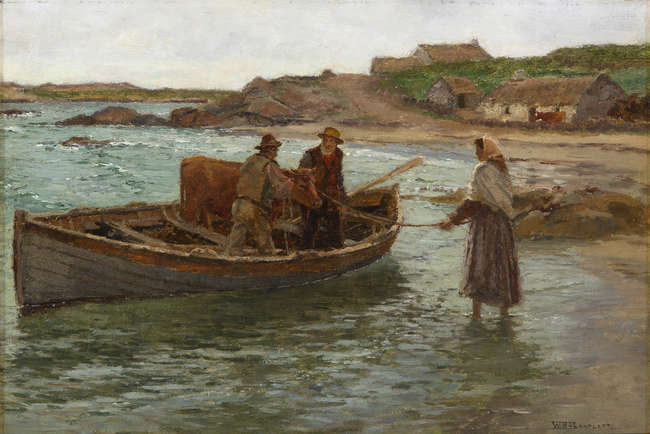
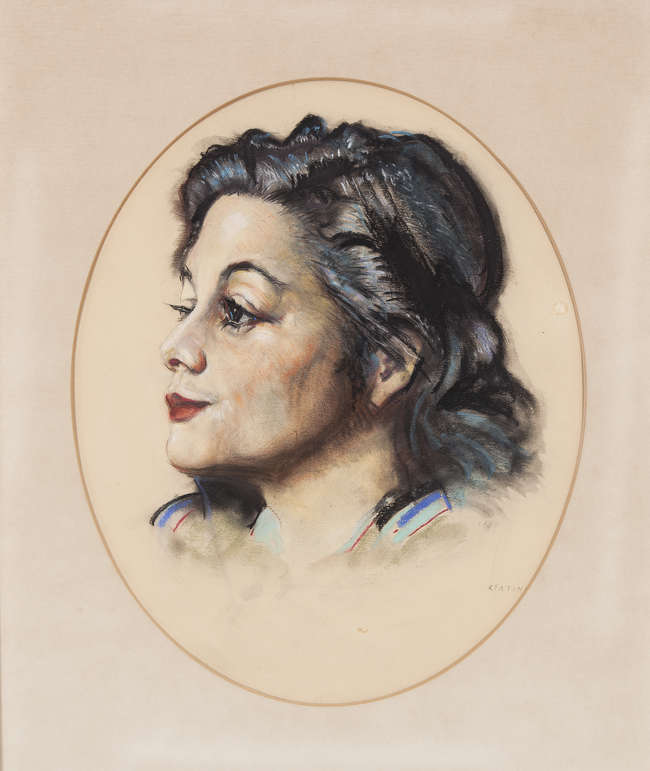
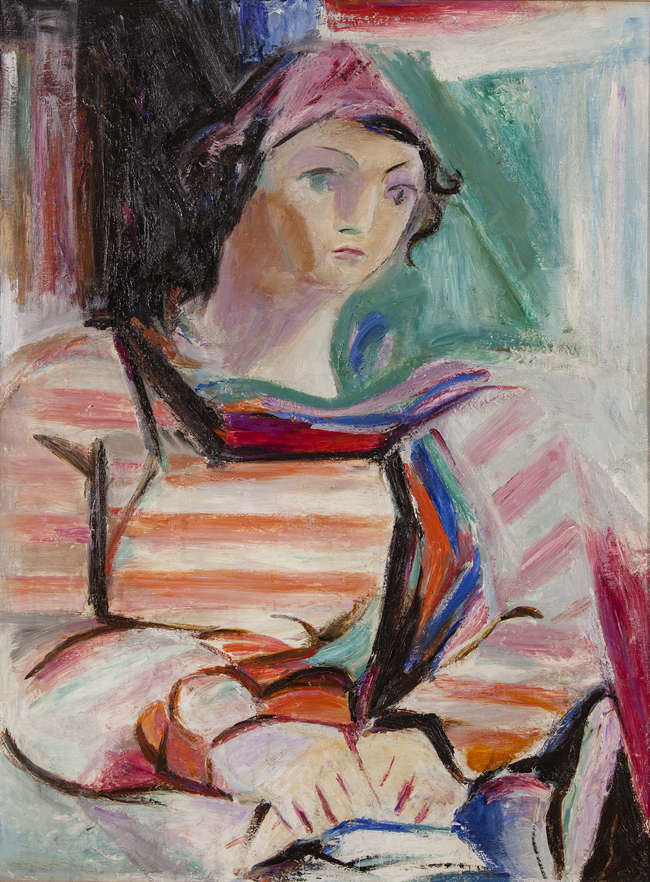
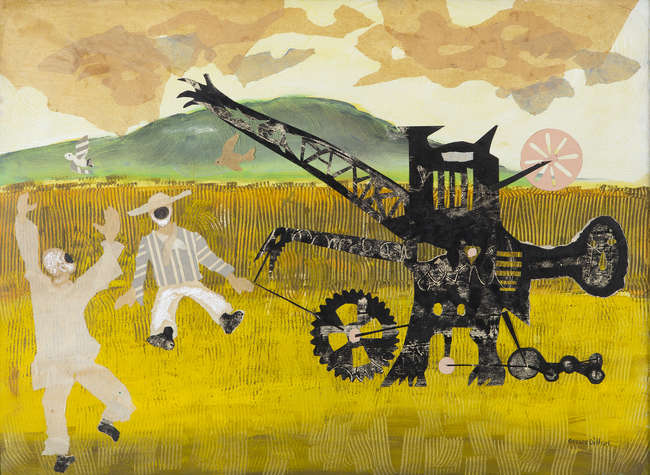
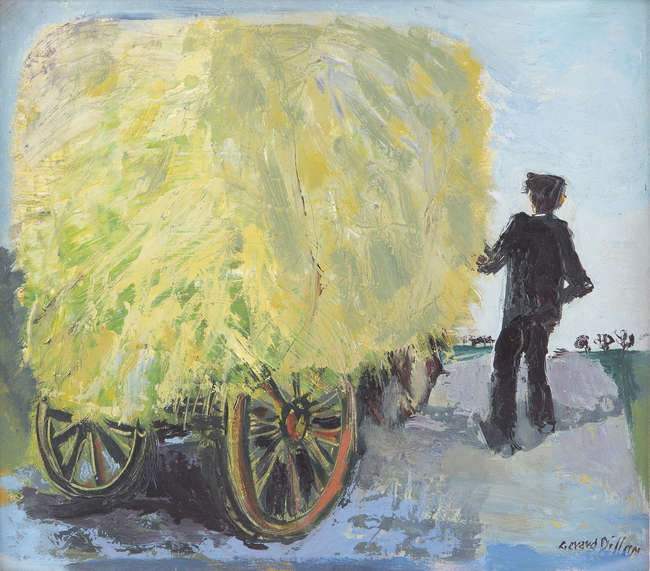
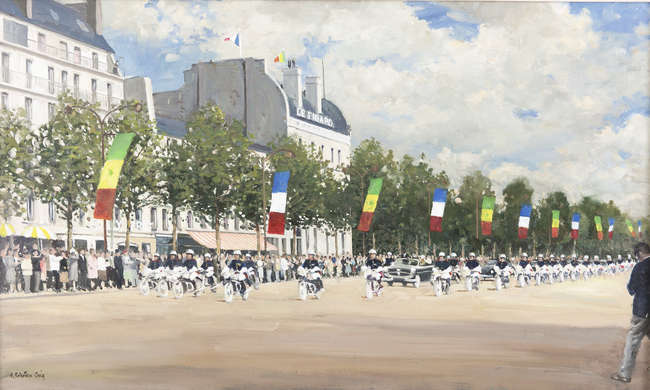
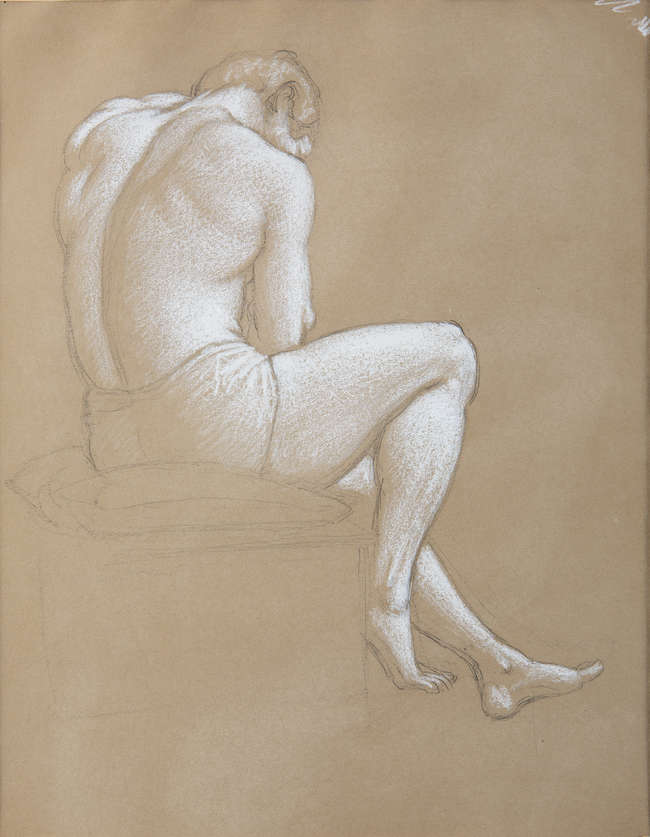

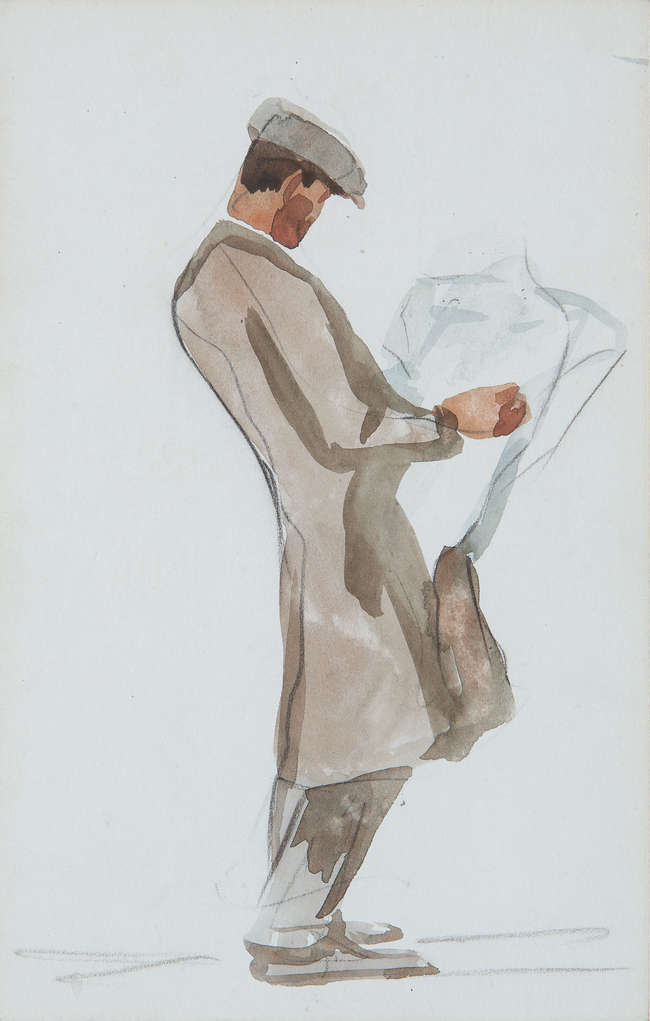
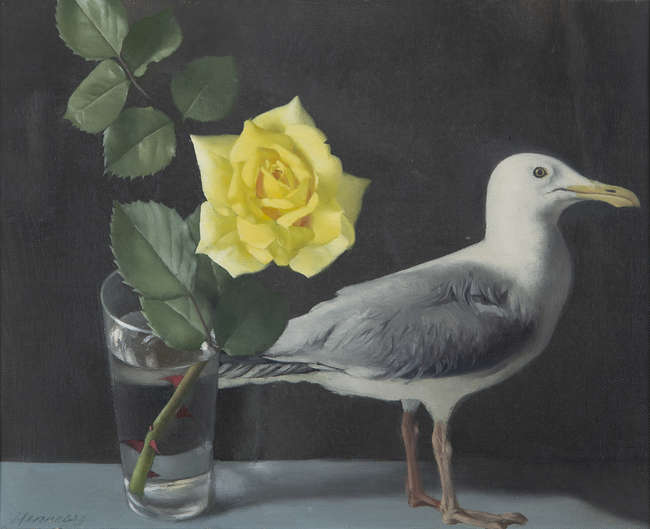
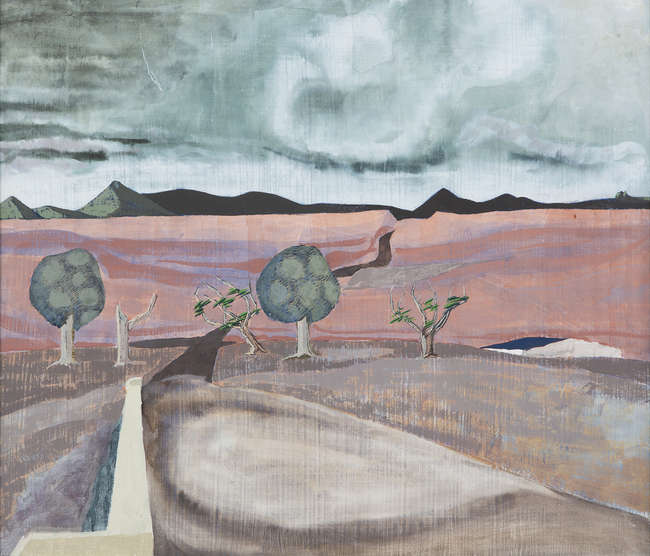
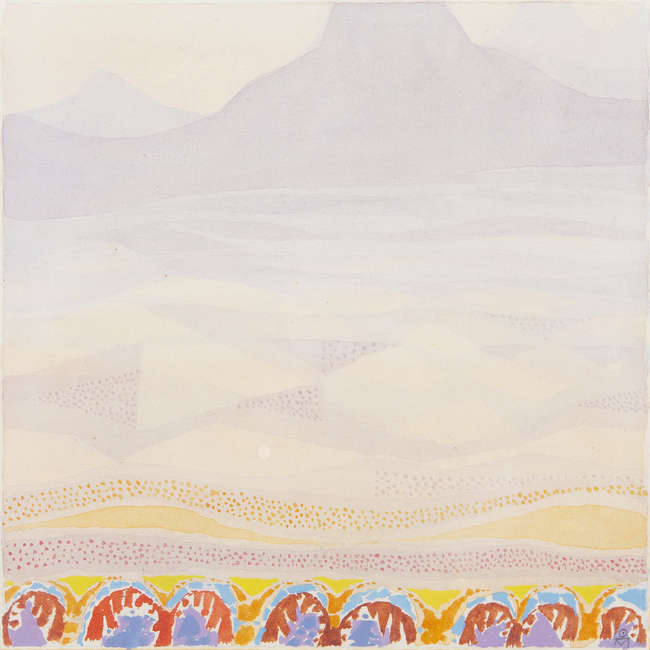
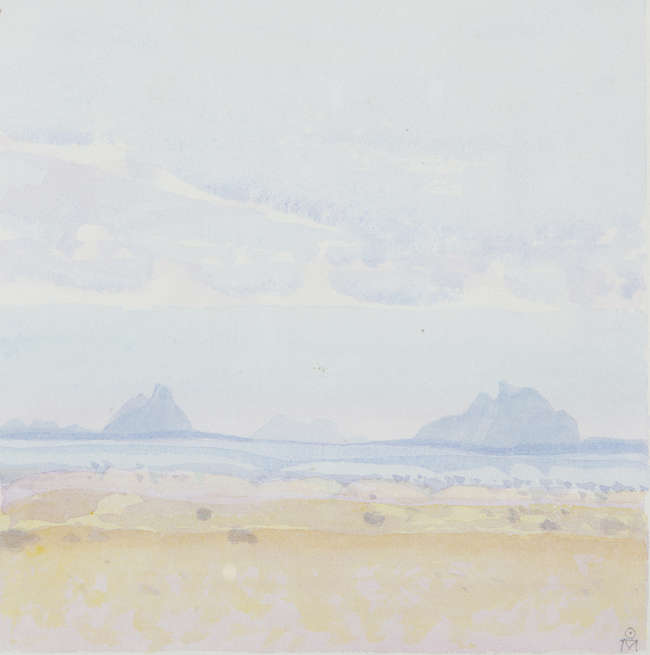
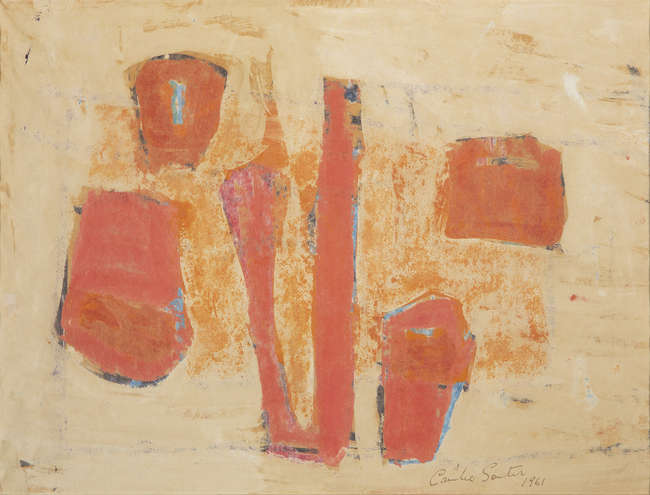
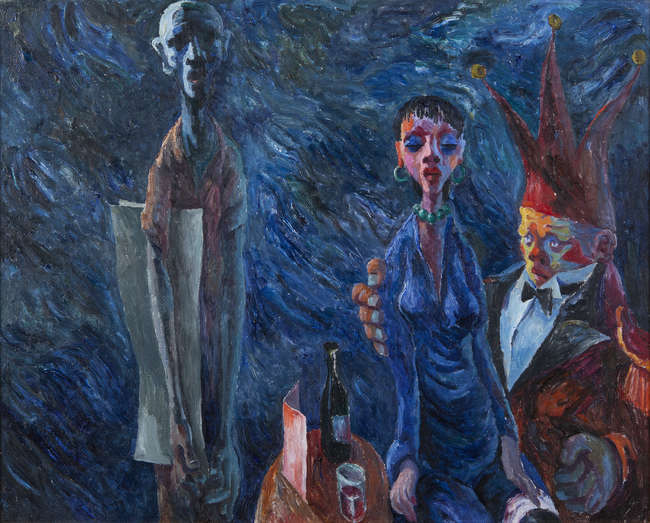
Testen Sie LotSearch und seine Premium-Features 7 Tage - ohne Kosten!
Lassen Sie sich automatisch über neue Objekte in kommenden Auktionen benachrichtigen.
Suchauftrag anlegen